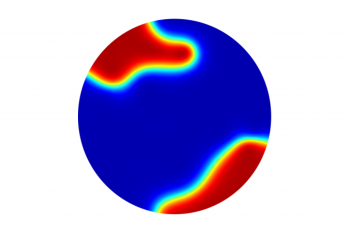
Spintronics (spin+electronics) is a multidisciplinary research field that uses the magnetic (spin) and electronic properties of magnetic materials to develop devices. Spintronic devices are used in magnetic memories and sensors such as hard disk drive, STT-MRAM, and digital compass (used in navigation systems). Physicists work with engineers (electrical, mechanical, mechanical, chemical engineers) and material scientists in designing and developing such devices and improving their performance. Moreover, the demand for smaller, faster, more reliable, and more energy-efficient devices is only increasing, emphasizing the importance of this research.
Dr. Beik Mohammadi and her research group use numerical and experimental techniques to investigate magnetic systems for spintronics applications. Currently, a GPU accelerated simulation package (called Mumax) is used to perform micromagnetic simulations. In addition, experimental research is performed in collaboration with the University of New Orleans. These studies aim to understand the interplay of magnetic properties and how they affect the performance, speed, and energy consumption of spintronic devices.
Current student researchers working on this project:
Elliott Clay, 2019-present
Former student researchers working on this project:
Jonathan Andino, 2020
Related publications:
J. Beik Mohammadi and A. D. Kent: Spin-torque switching mechanisms of perpendicular magnetic tunnel junction nanopillars, Applied Physics Letters 118, 132407 (2021)
N Statuto, J Beik Mohammadi, AD Kent: Micromagnetic instabilities in spin-transfer switching of perpendicular magnetic tunnel junctions, Physical Review B 103 (1), 014409 (2021)
Reduced Exchange Interactions in Magnetic Tunnel Junction Free Layers with Insertion Layers, ACS Applied Electronic Materials 1 (10), 2025-2029 (2019)
J. Beik Mohammadi, K. Cole, T. Mewes, C. K. A. Mewes: Inhomogeneous perpendicular magnetic anisotropy as a source of higher-order quasistatic and dynamic anisotropies, Physical Review B 97 (1), 014434 (2018)
